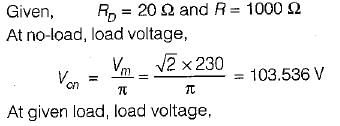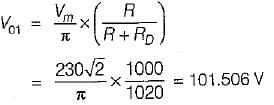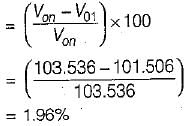Test: Diode Rectifiers - Electrical Engineering (EE) MCQ
10 Questions MCQ Test - Test: Diode Rectifiers
The circuit shown below is initially relaxed. With switch closed at t = 0, the conduction time of diode is around
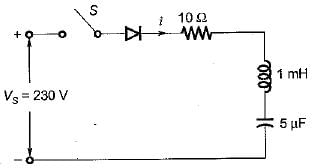

In the phase-controlled half-wave converter shown above, the thyristor is fired in every positive half cycle of the input voltage, at an angle α. The firing angle for the peak value of the instantaneous output voltage of 200 V would be close to
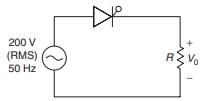

A single-phase 230 V, 1 kW heater is connected across single-phase 230 V, 50 Hz supply through a diode as shown in figure. The power delivered to the heater element is
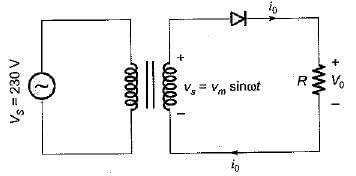

A single-phase full-bridge diode rectifier delivers a load current of 10 A, which is ripple free. The rms and average values of diode currents are respectively
In the circuit shown below, the diode states at the extremely large negative value of the input voltage vi are

A single-phase full-bridge diode rectifier delivers a constant load current of 20 A. The rms and average values of source current are respectively
A diode whose internal resistance is 20 Q is to supply power to a 1 kΩ load from a 230 V (rms) source of supply as shown in figure below. The percentage regulation from no load to the given load is
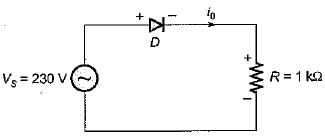
Assertion (A): A single-phase half-wave rectifier circuit is popularly known as one-pulse rectifier.
Reason (R) : A single-phase half-wave rectifier circuit is used to convert ac power to dc.
Assertion (A) : In 3-phase converters, the ripple frequency of the converter output voltage is higher than in single phase converter.
Reason (R) : The load current is mostly discontinuous in 3-phase converters.
Assertion (A) : In a half-wave rectifier with R-L load and with freewheeling diode, the input Volt- Ampere demand is less.
Reason (R) : With freewheeling diode, the stored energy is in the load itself.














